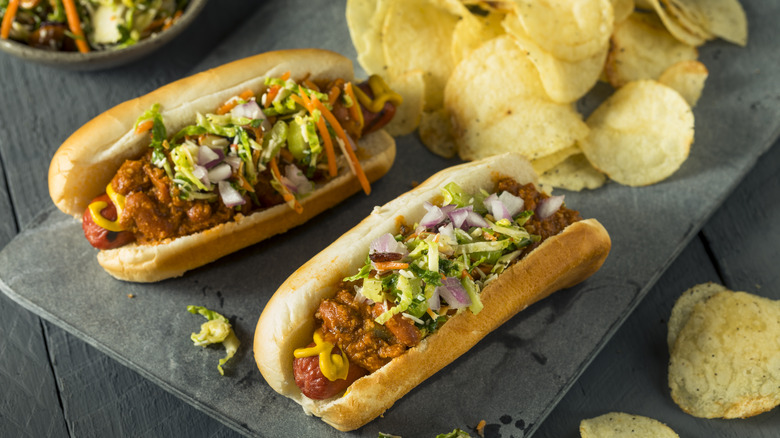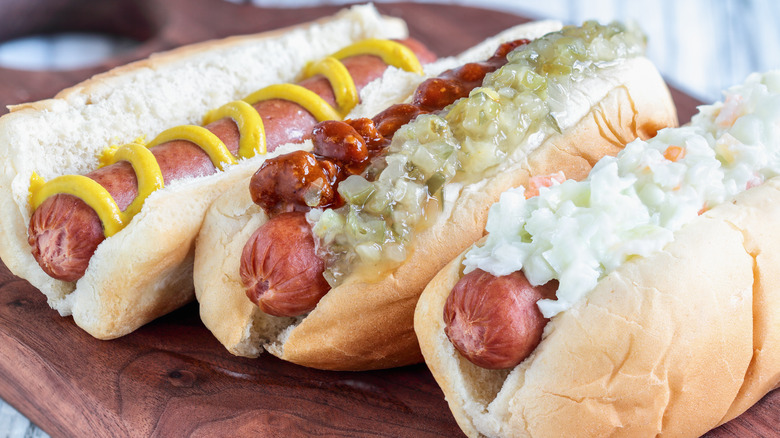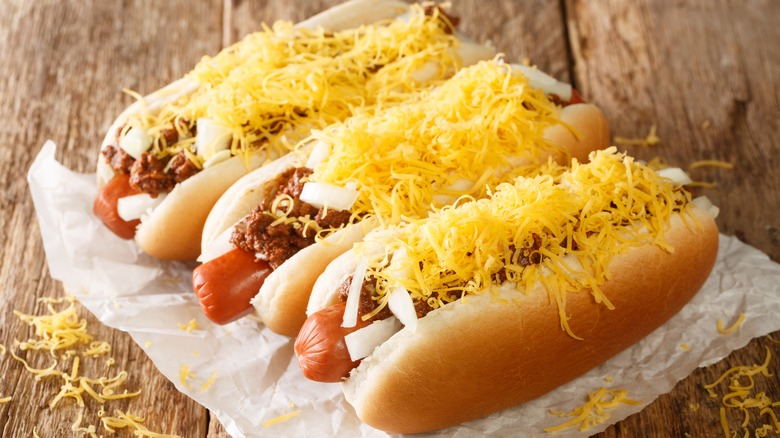What Makes West Virginia Hot Dogs Unique?
In West Virginia, a hot dog is a well-rounded meal. Sadly, despite its long history, the grab-and-go bite — or sandwich, if you prefer to call it that — that holds a special place in the hearts of residents is less known to outsiders. Nonetheless, the special assortment of toppings gets a hearty celebration at the annual West Virginia Hot Dog Festival where visitors indulge in speed eating contests and wiener dog races.
The hot dog begins with the usual bun and weenie, as they call it. Then, locals veer off the beaten path with a unique combination of meaty chili, onions, coleslaw, and a ribbon of yellow mustard. West Virginians have strong opinions about the chili, or 'sauce,' in that it must have a smooth consistency and not contain beans. Some allow for ketchup on top, but the majority of traditionalists do without (and may judge those who indulge).
This regional style is one of the many that dot the American countryside. And while it might take some driving to track down the West Virginian specialty, it's worth tasting from one of the hundreds of restaurants, like Morrison's Drive Inn, offering their version of the layered lunch. Simply order it 'with everything,' and the hot dog joint will take care of the rest.
Making the right sauce and slaw
Although cooking the chili-like sauce is straightforward, how you make it depends on your family history. Locals often view the topping as a family heirloom, passing the secret recipe down through generations. Although some cooks enjoy a spicier batch, many prefer to stick with a sweeter route by stewing ground beef with ketchup, vinegar, brown sugar, and a selection of bright spices like paprika, cumin, and garlic powder. Onions and tomato sauce can make an appearance, too, depending on how savory households decide to go. As for the consistency, that can range from loose to thick, just as long as it sticks to the weenie.
Just as West Virginians take their sauce seriously, they're also passionate about their coleslaw. This is not the time to break out a mayonnaise-free vinegar marinade. No, this is the occasion to build a creamy green cabbage and carrot slaw with a hint of sugar and tangy buttermilk. Make sure to thinly slice the veggies, so they melt in your mouth and mingle with the hot kick of the meat.
A study in contrasting textures and temperatures, the ingredients come together to create a balanced bite. The use of slaw is rumored to date back to the Great Depression when slaw dogs were seen as an economic invention to use up cheap, plentiful ingredients and satisfy hungry workers. This preference is not universal across the state, however, and some northern residents turn away from the cabbage topping.
Deviations from the classic West Virginia hot dog
Of course, busy cooks can also embrace a store-bought dressing or a packaged coleslaw, just as long as it looks nice and rich. Some brave chefs will reimagine the classic, offering mustard-based yellow slaw reminiscent of neighbors in the Carolinas where barbecue sauce is yellow mustard-based. (With this topping, diners skip the squirt of yellow mustard.)
In recent years, a crew of West Virginia residents made it their mission to taste the hot dog trail (per YouTube). At each restaurant, they were quick to ask how the weiner itself was prepared. Though there is no required cooking method or type of protein, the answers ranged from smoked to grilled to deep fried, and usually featured beef dogs. Their travels add to the passionate online community weighing in on the classic regional food.
In this state, even the diced onions are considered carefully. Yellow and sweet onions both suffice — though some aficionados will deliberate over the best varietal. Red is acceptable, but a notable change from the norm. And yellow mustard completes the standard package. To really shake things up, however, some will boldly finish the meal with a sprinkle of cheese to tame the chili.



